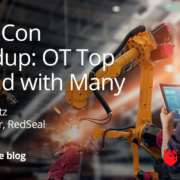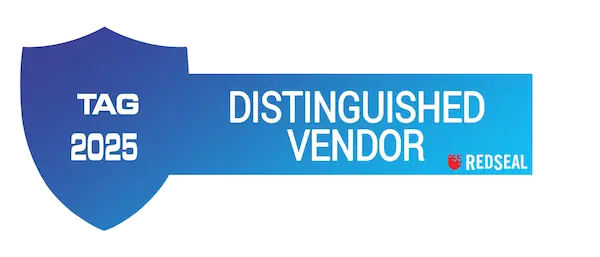Tales from the Trenches: Vol 2 — They have access to WHAT?!
Since 2004, RedSeal has helped our customers See and Secure their entire complex network. And while those customers may have understood the value of understanding their environment, how it was connected and see what’s at risk, there is often an “Aha” moment when the true significance is clear. The stories of these moments are lore within the walls of RedSeal. But these tales so clearly illustrate the value of RedSeal beyond just theory that we think they’re worth sharing. In the words of our team in the field, the ones working directly with our customers, this blog series will share the moments where it all gets real.
In this edition of the series, Nate Cash, Senior Director, Federal Professional Services/ Director of Information Security at RedSeal looks at a unique application for RedSeal, eliminating potential threats before they could happen.
They have access to WHAT?!
I’m always surprised at the new use-cases we come up with on site with RedSeal. There is a lot of information about a customer’s environment that allows us to answer questions pretty easily, if you know where to look. One Monday morning as I showed up to the office, before I was able to grab coffee, a SOC analyst stopped me at the door to ask me a very simple question, “We have a bunch of site-to-site VPNs with a few business partners, what can they access?”
On the surface this seems like a simple request, “How quickly do you need this information?” I responded. “Last Saturday.” Suddenly the caffeine rush I needed seemed like a long ways off. Turns out, one of the business partners of this customer was breached over the weekend and they notified this customer of the potential. The SOC had been manually mapping out the configs and drawing the paths on the white board, when I came in.
Staring at the board I thought, “There has to be a better way.” When the eureka moment happened. I fired up RedSeal and found the devices which lead to the business partners. In order to map across the VPN tunnels, we needed the config files from the other end. Of course, our business partners were not going to give that up, so I took the configs from our end, and reversed the ACLs changed the IPs based on the tunnel configs and reimported them into RedSeal.
10 min later we were able to answer the question, “what does this business partner have access to?” the answer, 1 server in the DC on 3 ports. But that one server had access to over 20 other servers which increased the downstream risk. This was a fun exercise where we got to see the power of RedSeal and how it can be used to quantify the real risk to the organization and reduce it by putting controls into place.
Once the incident was contained, we decided to go through, and hand jam the rest of the business partners VPN configurations into the model so the SOC would have this information in the event another partner was compromised. After writing up the configs and placing them into the model we found a couple of business partners with configurations that allowed any traffic on any port across.
Firewall engineers know, that sometimes during troubleshooting they’ll configure a device to allow anything across and verify that the firewall is or is not blocking an application. My theory is that these two partners were having issues with traffic going across or getting the VPN tunnel up, and put these rules in as placeholders, probably around two or three A.M. and when things “worked” they were going to come back later to fix them, and never got the time.
But this exercise allowed us to find a major security misconfiguration. If one of those two business partners with the ‘allow any traffic’ were the ones compromised over the weekend this story would have had a much different outcome. In security having a complete picture of your environment is key to being secure. What you don’t know can hurt you.
Interested in how RedSeal can help your team? Click here to set up a demo or an introductory call.





